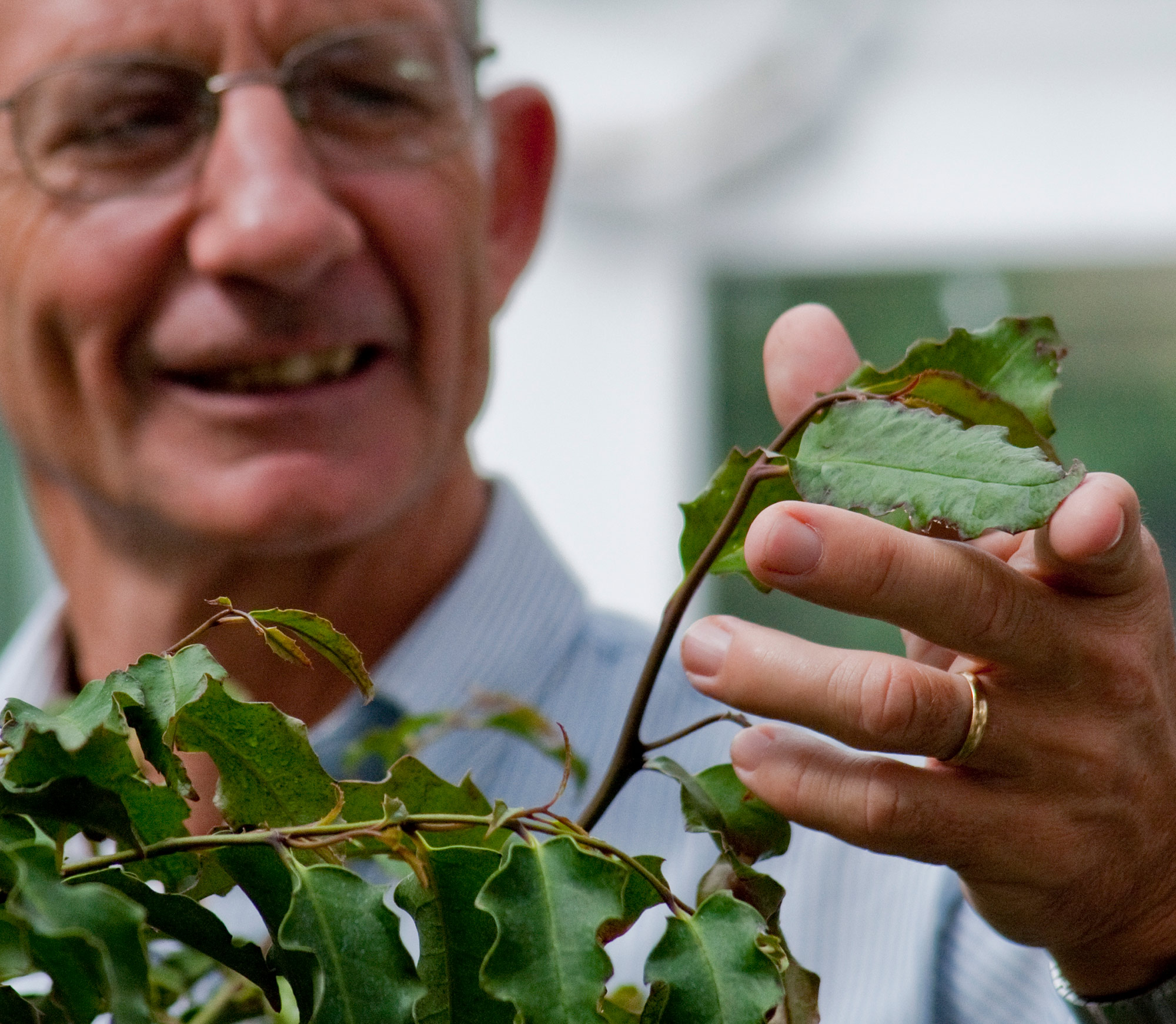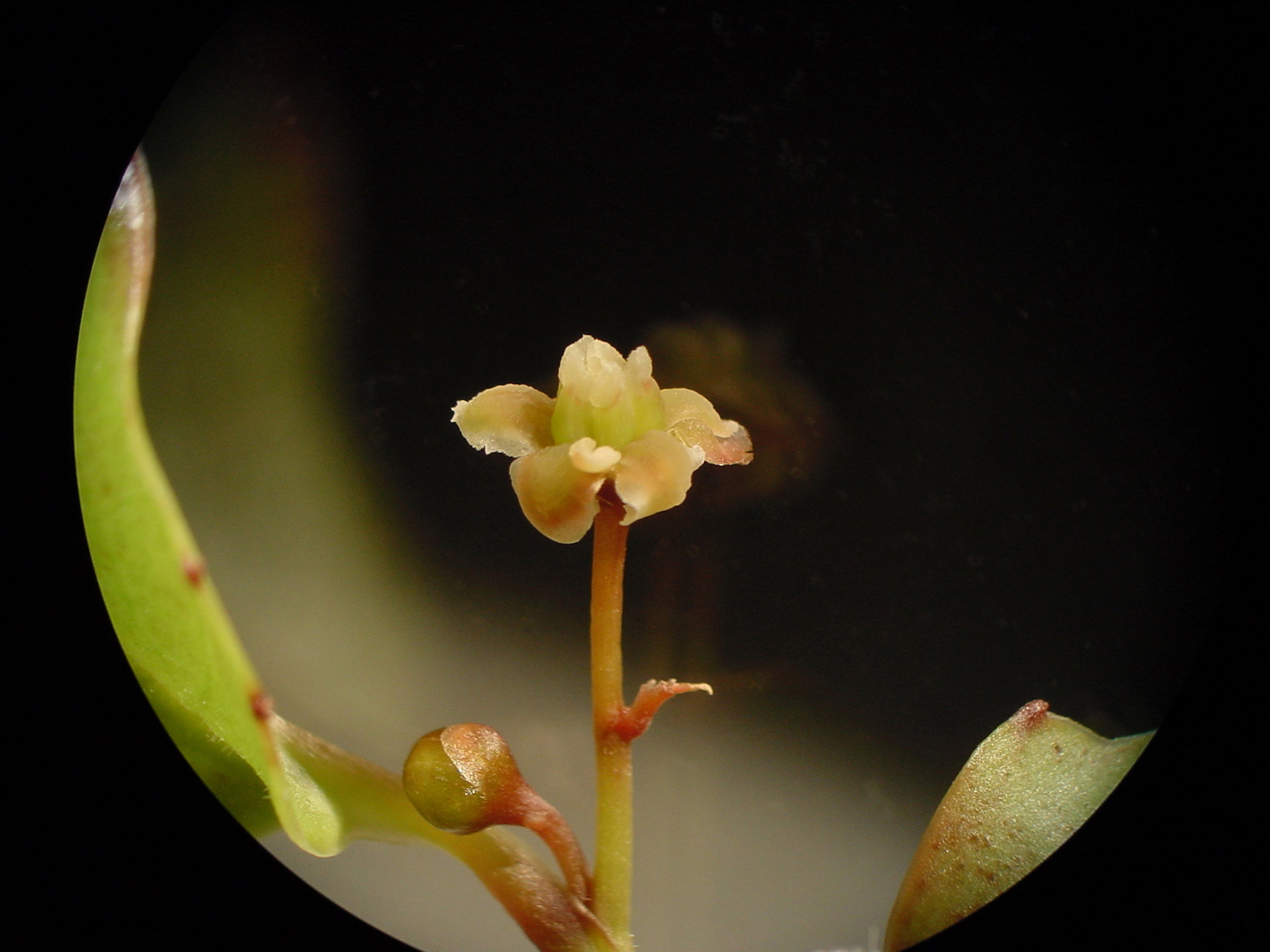In a letter to his friend and colleague, 19th century naturalist Charles Darwin referred to the sudden and rapid diversification of angiosperms, or flowering plants, as “an abominable mystery.”
Today, University of Florida researchers are part of a nationwide team preparing to open a door into a better understanding of plant evolution by sequencing the genome of the single living sister species to all other flowering plants. This plant, Amborella trichopoda, is a large shrub found only in high altitude regions on the South Pacific island of New Caledonia.
Why Amborella?
“Amborella, although not the most beautiful looking plant, has emerged as sort of a poster child for flowering plants because it is the sister group, or closest relative, of all of the other approximately 350,000 living species of angiosperms,” said Doug Soltis, UF distinguished professor of biology and project co-investigator. “It will allow us to better understand the genomes of other flowering plants such as crops – corn, rice, beans, cucumbers, tomatoes, potatoes, and so on.”
This project could shed light on why over the relatively short time span of 130 million years, flowering plants have diversified into more than 350,000 species, covering nearly all terrestrial habitats and many aquatic ones.
“The information from the project will allow researchers to determine whether a specific gene or process is unique to a particular plant or goes back to the beginnings of angiosperm evolution,” said Pam Soltis, project co-investigator and distinguished professor and curator of molecular systematics and evolutionary genetics at UF’s Florida Museum of Natural History. “This will enhance efforts to improve agriculture and forestry by giving plant biologists a reference point for understanding all other flowering plant genomes.”
Other participants
A consortium of five universities will share the complex task of unlocking the plant’s genetic secrets as part of the $7.3 million project funded by the National Science Foundation. The work at UF is a collaborative effort among researchers at the Florida Museum, the department of biology and the UF Genetics Institute.

Florida Museum photo by Jeff Gage
The Pennsylvania State University is the lead institution on the four-year project, which also involves the University of Arizona, the University at Buffalo and the University of Georgia.
Brad Barbazuk, of the department of biology, is the third member of the UF team, which will receive about $1.5 million for its work on the project. The researchers are also members of the UF Genetics Institute.
Barbazuk and his team will assemble smaller sequences of DNA generated at other institutions into the complete Amborella genome, and also map specific genes on the plant’s chromosomes through a process that uses microscopic fluorescent labels.
“If tracing your ancestors is your hobby, you will love the Amborella project,” said Stanford University biology professor Virginia Walbot. “All future studies of flowering plants will use this catalog of Amborella genes to interpret the changes that have ensued during the natural selection that resulted in the hundreds of thousands of flowering plant species present on our earth today.”
Past Amborella research
“We’ve been interested in Amborella for about 15 years now while trying to reconstruct the evolutionary history of flowering plants for the better part of the past 20 years,” Pam Soltis said. “And through a set of collaborations with other institutions over the last decade, we’ve now assembled this team to undergo the sequencing of the entire nuclear genome of Amborella.”

Florida Museum photo by Sangtae Kim
Pam Soltis said about 10 flowering plant genomes have been completely sequenced and none comes close to Amborella in terms of its place near the base of the evolutionary tree. Plants are more difficult to sequence than animals because their genomes are generally larger and more complex in terms of repeated sequences.
“Amborella is the platypus of the angiosperms,” Doug Soltis said.
The platypus genome has been sequenced for mammals because it occupies the first branch of the mammal evolutionary lineage and is a reference genome for all other mammals. And like Amborella, there is no other genus in its family.
“But the platypus is a sister species to only about 5,400 mammals,” Doug Soltis said. “Amborella, on the other hand, is a sister species to more than 350,000 flowering plant species, so you can see how much more significant a role it could play in helping scientists better understand how the world’s terrestrial ecosystems, dominated by flowering plants, developed over time.”
A majority of genome research funding goes to the biomedical industry, and much of the technology used in plant genomics comes from that.
“A lot of what we’re doing has trickled down from the human genome project,” Pam Soltis said.
Learn more about the Molecular Systematics & Evolutionary Genetics Lab at the Florida Museum.